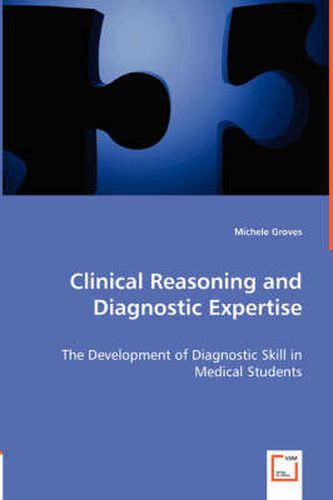Readings Newsletter
Become a Readings Member to make your shopping experience even easier.
Sign in or sign up for free!
You’re not far away from qualifying for FREE standard shipping within Australia
You’ve qualified for FREE standard shipping within Australia
The cart is loading…






This title is printed to order. This book may have been self-published. If so, we cannot guarantee the quality of the content. In the main most books will have gone through the editing process however some may not. We therefore suggest that you be aware of this before ordering this book. If in doubt check either the author or publisher’s details as we are unable to accept any returns unless they are faulty. Please contact us if you have any questions.
Diagnosis and its underlying clinical reasoning are central to medical practice. Formerly, both doctors and patients alike tended to view diagnosis as an art, an intuitive ability that could not be taught but that emerged only after extensive clinical experience. However in these days of public accountability, the ability of doctors to properly understand and diagnose patient problems is more crucial than ever. Concern for patient safety has led healthcare providers to campaign strongly to reduce levels of patient-related adverse events. Once, these were viewed as a regrettable but mostly unavoidable consequence of the uncertainty inherent in medicine. But the evidence is that many are highly preventable. In particular, the level of diagnostic error, the second largest cause of adverse events overall, highlights both the importance of the diagnostic process in medical care and the need for universities and medical educators to graduate doctors with strong diagnostic and clinical reasoning skills. This work explores the nature, role in diagnosis and development of clinical reasoning, and looks to apply the insights gained to under-graduate and postgraduate medical education.
$9.00 standard shipping within Australia
FREE standard shipping within Australia for orders over $100.00
Express & International shipping calculated at checkout
This title is printed to order. This book may have been self-published. If so, we cannot guarantee the quality of the content. In the main most books will have gone through the editing process however some may not. We therefore suggest that you be aware of this before ordering this book. If in doubt check either the author or publisher’s details as we are unable to accept any returns unless they are faulty. Please contact us if you have any questions.
Diagnosis and its underlying clinical reasoning are central to medical practice. Formerly, both doctors and patients alike tended to view diagnosis as an art, an intuitive ability that could not be taught but that emerged only after extensive clinical experience. However in these days of public accountability, the ability of doctors to properly understand and diagnose patient problems is more crucial than ever. Concern for patient safety has led healthcare providers to campaign strongly to reduce levels of patient-related adverse events. Once, these were viewed as a regrettable but mostly unavoidable consequence of the uncertainty inherent in medicine. But the evidence is that many are highly preventable. In particular, the level of diagnostic error, the second largest cause of adverse events overall, highlights both the importance of the diagnostic process in medical care and the need for universities and medical educators to graduate doctors with strong diagnostic and clinical reasoning skills. This work explores the nature, role in diagnosis and development of clinical reasoning, and looks to apply the insights gained to under-graduate and postgraduate medical education.